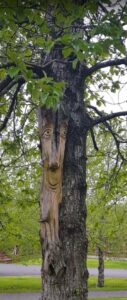You can spend a few years spinning out the first draft of your latest forthcoming blockbuster novel, reading a several dozen books, reports, blogs and PhD theses. You take trips to far corners to walk the land and sprain your clicking finger in pursuit of possibly factual minutiae — fruitful and otherwise. And still find yourself, nearing the end of the first major revision of your masterpiece only to a discover a scene missing, one that absolutely, positively has to be there near the end, pulling together all four acts and a text rumbling toward 150,000 words.
 You know who is going to be in this missing scene: your protagonist and the adversary who changed the arc of his story. You don’t have a place.
You know who is going to be in this missing scene: your protagonist and the adversary who changed the arc of his story. You don’t have a place.
It’s somewhere in Iceland, where the fourth act is staged. You think the adversary has had a difficult life since the fateful encounter more than 30 years before. You remember a punch-drunk boxer you met a long time ago and it occurs to you that your adversary suffered multiple concussions as a soccer player and retired, late in life, to a facility for disabled people.
Which leads you to discover Solheimar Ecovillage, a self-sustaining home to about 100 people in southwest Iceland. A mix of abled and disabled. Organic farming. An emphasis on the arts.
You learn the place was founded in 1930 by a visionary, a woman who started with five challenged children living in tents on land leased from a church. They farmed organically from the beginning, 90-some years ago. The national government funded construction of their first building in 1932. In 2000, the government ponied up funds to build Sesseljuhús, a turf-roofed case study in sustainable design.
You know that this is the place for your crucial scene when you learn the founder, Sesselja Sigmundsdotttir, was a follower of anthroposophist Rudolph Steiner. The father of the Waldorf School movement, where your kids went to school and your wife has been teaching for … well, for a long time. The Solheimar website even uses the same anthroposophical fonts used by Waldorf schools everywhere. The architectural similarities are inescapable.
For many years, one of the most controversial aspects of Solheimar (Sunworlds) is the integration of abled and disabled children. This what Wikipedia says:
“The heart of the Sólheimar ideology is to give all individuals a fair chance and to maximise their potential. By focusing on individuals’ possibility instead of their limitations, Sólheimar aims to create the space for each resident to take every opportunity that arises for each person to grow and develop. Versatility is the strength of Sólheimar, so people with special needs that reside here will always be the centre of the community. This works through the idea of reverse integration: those without special needs adapt to the abilities of those who do thus they can work together to make their community one of an equal and sustainable one.”
Reverse integration.